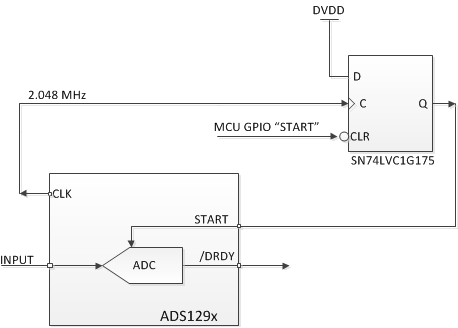I'm noticing an issue with the resynchronization of the clock after stopping and then starting the TI chip. I assume the time base (I'm using 16kHz) will start once the start command is sent. What I'm seeing is a discrepency of exactly 1 16kHz cycle, or 62.5us. After sending the STOP command, waiting for 18 tclck cycles, then sending a START command, I observe a 62.5us difference in start times each time i stop and then start again. It is seemingly random. My application is time sensitive and therefore, I need to eliminate this variability. Has anyone come across this, or know what might cause it?
-
Ask a related question
What is a related question?A related question is a question created from another question. When the related question is created, it will be automatically linked to the original question.


